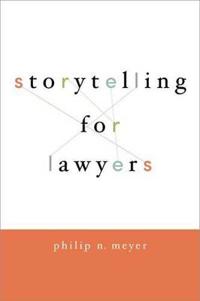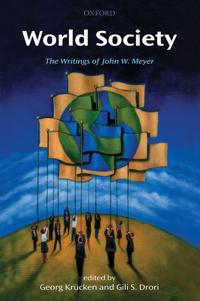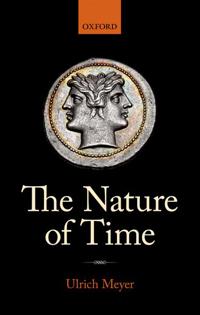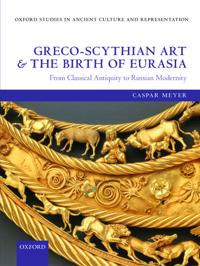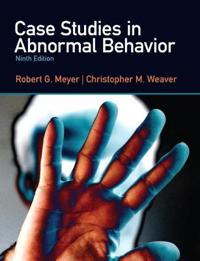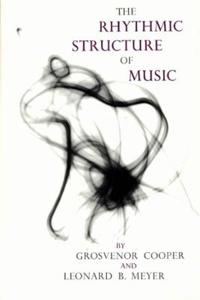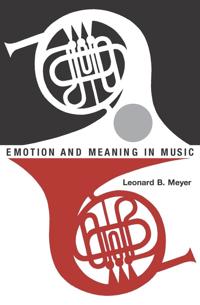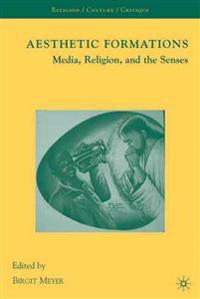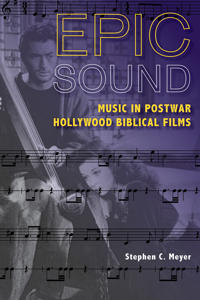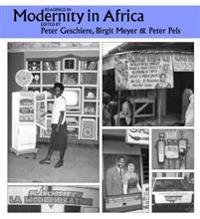Storytelling for Lawyers (Häftad)
avPhilip Meyer
ISBN: 9780195396638 - UTGIVEN: 2014-05Good lawyers have an ability to tell stories. Whether they are arguing a murder case or a complex financial securities case, they can capably explain a chain of events to judges and juries so that they understand them. The best lawyers are also able to construct narratives that have an emotional i[...]
World Society: The Writings of John W. Meyer (häftad)
ISBN: 9780199593439 - UTGIVEN: 2010-08John W. Meyer's work broke new grounds in institutional thought in sociology and made him a central thinker for the emerging interdisciplinary field of neo-institutionalism, while at the same time establishing institutional thought's comparative variant, world society theory. His scholarship plays a[...]
The Nature of Time (Inbunden)
avUlrich Meyer
ISBN: 9780199599332 - UTGIVEN: 201307The theory of relativity convinced many philosophers that space and time are fundamentally alike, and that they are mere aspects of a more fundamental space-time. In The Nature of Time, Ulrich Meyer argues against this consensus view. Instead of a 'spatial' account of time that treats instants like [...]
Intergenerational Justice (Pocket)
avAxel (EDT) Gosseries, Lukas H. (EDT) Meyer, Axel (EDT) Gosseries
ISBN: 9780199659326 - UTGIVEN: 2012-11Is it fair to leave the next generation a public debt? Is it defensible to impose legal rules on them through constitutional constraints? From combating climate change to ensuring proper funding for future pensions, concerns about ethics between generations are everywhere. In this volume sixteen phi[...]
Greco-Scythian Art and the Birth of Eurasia (Inbunden)
avCaspar Meyer
ISBN: 9780199682331 - UTGIVEN: 2013-11Since their discovery in nineteenth-century Russia, Greco-Scythian artefacts have been interpreted as masterpieces by Greek craftsmen working according to the tastes of the Scythian nomads and creating realistic depictions of their barbarian patrons. Drawing on a broad array of evidence from archaeo[...]
The Oxford History Of Mexico (Pocket)
avWilliam H. Beezley, Michael C. Meyer
ISBN: 9780199731985 - UTGIVEN: 2010-08-19The tenth anniversary edition of The Oxford History of Mexico tells the fascinating story of Mexico as it has evolved from the reign of the Aztecs through the twenty-first century[...]
Case Studies in Abnormal Behavior (Häftad)
avRobert G. Meyer, Christopher M. Weaver
ISBN: 9780205036998 - UTGIVEN: 2012-02Contemporary Cases for Students Case Studies in Abnormal Behavior brings the field of abnormal psychology to life with its rare combination of readability, humor, and strong scholarship. This rich collection of case studies integrates contemporary and recognizable classic cases to illustrate a wide [...]
The Rhythmic Structure of Music (Häftad)
avGrosvenor W. Cooper, Leonard B. Meyer
ISBN: 9780226115221 - UTGIVEN: 196304In this influential book on the subject of rhythm, the authors develop a theoretical framework based essentially on a Gestalt approach, viewing rhythmic experience in terms of pattern perception or groupings. Musical examples of increasing complexity are used to provide training in the analysis, per[...]
Emotion and Meaning in Music (Pocket)
avLeonard B. Meyer
ISBN: 9780226521398 - UTGIVEN: 196102"Altogether it is a book that should be required reading for any student of music, be he composer, performer, or theorist. It clears the air of many confused notions . . . and lays the groundwork for exhaustive study of the basic problem of music theory and aesthetics, the relationship between patte[...]
Style and Music: Theory, History, and Ideology (Pocket)
avMeyer, Leonard B
ISBN: 9780226521527 - UTGIVEN: 1997-03-06Leonard Meyer proposes a theory of style and style change that relates the choices made by composers to the constraints of psychology, cultural context, and musical traditions. He explores why, out of the abundance of compositional possibilities, composers choose to replicate some patterns and negle[...]
Jews in Nazi Berlin (Inbunden)
avBeate Meyer, Hermann Simon, Chana C. Schutz
ISBN: 9780226521572 - UTGIVEN: 200912Though many of the details of Jewish life under Hitler are familiar, historical accounts rarely afford us a real sense of what it was like for Jews and their families to live in the shadow of Nazi Germany's oppressive racial laws and growing violence. With "Jews in Nazi Berlin", those individual liv[...]
Boredom (Häftad)
avPatricia Meyer Spacks
ISBN: 9780226768540 - UTGIVEN: 199605This text offers an explanation of why boredom both haunts and motivates the literary imagination. Moving from Samuel Johnson and Jane Austen to Donald Barthelme and Anita Brookner, the author shows us how we arrived in a postmodern world where boredom is the all-encompassing name we give our discon[...]
Forecasting, Warning and Responding to Transnational Risks (Inbunden)
avChiara (EDT) De Franco, Christoph O. (EDT) Meyer, Chiara (EDT) De Franco
ISBN: 9780230297845 - UTGIVEN: 2011-09What does it take to recognise and prevent hazards with international causes and consequences? How can we handle the risks related to financial instability, terrorism, pandemics, air pollution, flooding and climate change? The book brings together scholars and senior practitioners from different are[...]
Aesthetic Formations (Inbunden)
avBirgit (EDT) Meyer
ISBN: 9780230605558 - UTGIVEN: 2009-07The central theme of this volume is the incorporation of newly accessible mass media into practices of religious mediation in a variety of settings, including Pentecostal-charismatic churches and neo-traditional and Islamic movements, and the use of religious forms and image in the sphere of radio a[...]
Assessment in Social Work Practice (Inbunden)
avCarol H. Meyer
ISBN: 9780231075565 - UTGIVEN: 1993-03-17Creating GI Jane: Sexuality and Power in the Women's Army Corps During World War II (Inbunden)
avLeisa D. Meyer
ISBN: 9780231101448 - UTGIVEN: 1996-09-11Creating GI Jane: Sexuality and Power in the Women's Army Corps During World War II (Pocket)
avLeisa D. Meyer
ISBN: 9780231101455 - UTGIVEN: 1998-03-17Dinosaur Tracks and Other Fossil Footprints of Europe (Inbunden)
avMartin G. Lockley, Christian Meyer
ISBN: 9780231107105 - UTGIVEN: 2000-02-15History of the New York Court of Appeals, The: 1932-2003 (Övrig)
avBernard S. Meyer, Burton C. Agata, Seth H. Agata
ISBN: 9780231136327 - UTGIVEN: 2006-06-09From 1932 to 2003, the New York Court of Appeals-the highest court in the state- decided crucial cases pertaining to the social and legal issues of the day. The judges' rulings affected laws regarding motion picture censorship; obscenity, indecency, and immorality; religion; capital punishment; tort[...]
Epic Sound (Häftad)
avStephen C. Meyer
ISBN: 9780253014511 - UTGIVEN: 2014-11Lavish musical soundtracks contributed a special grandeur to the new widescreen, stereophonic sound movie experience of postwar biblical epics such as Samson and Delilah, Ben-Hur, and Quo Vadis. In Epic Sound, Stephen C. Meyer shows how music was utilized for various effects, sometimes serving as a [...]
Readings in Modernity in Africa (Häftad)
avPeter Geschiere, Birgit Meyer, Peter Pels
ISBN: 9780253219961 - UTGIVEN: 200812Questions surrounding modernity and its meanings weigh heavily on students and scholars who study Africa. Becoming modern carries a lot of different meanings and puts concepts of culture, tradition, and nation into uneasy use. Readings in Modernity in Africa brings together classic essays, old and n[...]
Biomedical Signal Analysis: Contemporary Methods and Applications (Övrig)
avFabian J. Theis, Anke Meyer-Base
ISBN: 9780262013284 - UTGIVEN: 2010-04-23Biomedical signal analysis has become one of the most important visualization and interpretation methods in biology and medicine. Many new and powerful instruments for detecting, storing, transmitting, analyzing, and displaying images have been developed in recent years, allowing scientists and phys[...]
How to Catch a Robot Rat: When Biology Inspires Innovation (Övrig)
avAgnes Guillot, Jean-Arcady Meyer
ISBN: 9780262014526 - UTGIVEN: 2010-09-10Humans have modeled their technology on nature for centuries. The inventor of paper was inspired by a wasp's nest; Brunelleschi demonstrated the principles of his famous dome with an egg; a Swiss company produced a wristwatch with an alarm modeled on the sound-producing capabilities of a cricket. To[...]
The Environmental Advantages of Cities (Inbunden)
avWilliam B. Meyer
ISBN: 9780262019040 - UTGIVEN: 2013-03-15End of the Wild, The (Övrig)
avStephen M. Meyer
ISBN: 9780262134736 - UTGIVEN: 2006-10-13With the extinction rate at 3000 species a year and accelerating, we can now predict that as many as half of the Earth's species will disappear within the next 100 years. The species that survive will be the ones that are most compatible with us: the weedy species--from mosquitoes to coyotes--that t[...]

